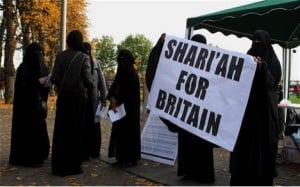As right-wing pundits are gaining momentum in North America, minority groups are unsurprisingly being targeted. Among the questions being raised is: when does “national security” trump the need to address an instance of sexual assault against women? Muslim women, especially those who wear the hijab or niqab, experience a unique sense of vulnerability in the post-911 world. Two cases come to mind when pondering the parallels between the state’s fixation on curbing terrorism and the frustration that can be felt amongst Muslim women in North America who experience sexual violence.
Experience of Sexual Assault? First, let’s make sure you are not a terrorist
I’ve read numerous articles about Balayla Ahmad, a 35 year-old black Muslim woman of the University of Bridgeport in Connecticut, who reported a series of instances of being sexually harassed by a fellow student to the university administration, and was met with apathetic responses. Similar to numerous cases of reported sexual assault, Ahmad’s claims weren’t taken seriously. After approaching the dean of her university, he simply told her that his “hands were tied” and asked her what she suggested should be done.
Here’s the astonishing part: instead of the university showing appreciation for Ahmad’s strength to stand up and speak out, Ahmad was not only denied any reprisals against her attacker, but was later approached by university security personnel, who informed her that the F.B.I wanted to interrogate her based on allegations that she was involved in terrorism that was provided by her attacker.
The university’s decision to act on threats of a potential terrorist in their midst, while ignoring reports of sexual harassment, clearly sends the message that the violence and terror that is wrought on women’s bodies are trivial, especially in comparison to potential terrorist acts against homeland security.
Forget your abuse; your niqab offends
This past December, a Muslim niqab-wearing woman known as NS took a complaint to the Canadian Supreme Court to fight the request that she remove her veil while on trial, in a case against her cousin and uncle, who sexually abused her when she was a child, between the years of 1982-1987. When the sexual assault case was first brought to court three years ago, NS’s uncle and cousin argued that her attire impeded on their right to a fair trial; the preliminary judge agreed, concluding that the rights to a fair trial trumped the rights to religious freedom.
The contentious debate around the niqab in this case can be compared to the case of Ahmad; the attention is diverted away from the woman’s sexual assault and is instead directed towards her religious expression and affiliation.
A backgrounder provided by the Women’s Legal Education and Action Fund (LEAF) in 2010, provides an important analysis of the issue:
“There is a long history of sexual assault complainants being humiliated, degraded and re-victimized on the stand, to get women to drop sex assault charges or not bring them in the first place. No other category of witness is subjected to the same discriminatory scrutiny and abuse. The request to remove the niqab must be seen in the context of the discriminatory treatment of women who report sexual assault.”
Don’t bring your issues here
The statistics that aim to describe the scale of sexual assault and rape are frighteningly skewed, considering how many cases are unreported. While living in a rape culture that sets the stage for the easy objectification and abuse of women in the media, government policy, and social customs, the circumstances set up against the Muslim woman further exacerbates the problem.
How to shut up a Muslim woman who attempts to seek justice for violence? You call her a terrorist, a security threat. You ask her to prove her religious conviction, and allow for her abusers to once again set their piercing eyes on the parts of her body that she has purposely chose to hide, for reasons that are personal to her. The re-victimization that Balayla Ahmad and NS have undergone sheds light on how societal institutions that are meant to be pillars of equality and justice are instead allowing attackers to control the women they target through questioning their religious practice and affiliation. In the post-9/11 environment, the media’s mass coverage over the politics of religion and what a woman wears in Europe and North America has contributed to allowing for the tool of suspicion of religion to be used in unique ways against Muslim women.
Through the media pieces on Ahmad’s case that I encountered, reporters have given a fair assessment of the plaintiff’s case, referring to embedded elements of Islamophobia. However, with NS’s case the, discourse is caught up in the legal matters of balancing rights, specifically those guaranteed by the Canadian Charter of Rights and Freedoms, Canada’s constitution.
The war against terror is being waged against the bodies of Muslim women both abroad and within the borders of Western nations. It is essential that our communities open the opportunity to openly discuss violence against women in all its forms, in order to provide an environment that is not wrought with fear and shame. Our strength lies in our ability to self-address and provide support. Through open dialogue, the fears of retribution from government and media giants can be decreased, and hopefully the focus can be placed on our healing instead of our beliefs and clothing choices.











